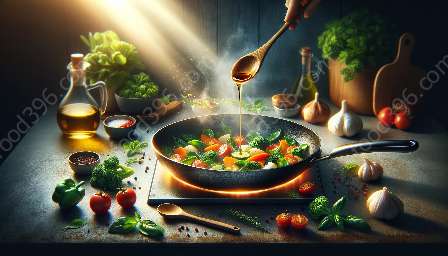Sautéing with herbs and spices adds depth and complexity to dishes, infusing them with enticing aromas and flavors. This cooking technique involves quickly cooking small pieces of food in a small amount of oil or fat over high heat. It's a popular method for preparing a wide range of dishes, from meats and seafood to vegetables and grains.
Understanding Sautéing
Sautéing is a versatile cooking method that requires a few key elements for success. The heat must be high enough to quickly cook the food and create a desirable browning, known as the Maillard reaction. Additionally, the pan should be the right size and material to ensure even heat distribution and prevent overcrowding.
When it comes to sautéing with herbs and spices, the process becomes even more exciting. Fresh or dried herbs and a variety of spices can elevate the flavors of the ingredients, offering a new level of taste and aroma to your dishes. Herbs like thyme, rosemary, and basil, along with spices such as cumin, paprika, and turmeric, can transform a simple sautéed dish into a culinary masterpiece.
Best Practices for Sautéing with Herbs and Spices
While sautéing with herbs and spices presents an opportunity for culinary creativity, it's essential to adhere to some best practices to ensure the perfect balance of flavors and textures in your dishes. Here are some tips and techniques:
- Preparation: Ensure that your ingredients are prepped and ready to go before you start the sautéing process. This includes chopping herbs, measuring spices, and cutting the main ingredients into consistent pieces for even cooking.
- Heat Control: Keep the heat high to achieve the desired sear and browning, but be vigilant to prevent burning. Adjust the heat as needed to maintain the ideal cooking temperature.
- Layering Flavors: Start by sautéing the aromatics, such as onions and garlic, to build a flavorful base. Then, add herbs and spices at the right time to ensure they release their full aroma and flavor without becoming bitter.
- Seasoning: Season your sautéed dishes as you go, adding herbs and spices in stages to allow the flavors to develop and meld together. Taste and adjust seasoning as needed throughout the cooking process.
- Pairing: Consider the flavor profiles of your chosen herbs and spices to ensure they complement the main ingredients rather than overpowering them. Experiment with different combinations to discover exciting new flavor pairings.
Popular Sautéing Recipes Featuring Herbs and Spices
From savory skillet meals to vibrant vegetable dishes, the possibilities for sautéing with herbs and spices are endless. Here are some popular recipes to inspire your culinary adventures:
- Lemon and Herb Chicken Sauté: Sauté thinly sliced chicken breast in olive oil with a medley of fresh herbs like parsley, thyme, and sage. Finish with a splash of white wine and a squeeze of lemon juice for a bright and flavorful dish.
- Spiced Vegetable Stir-Fry: Sauté an array of seasonal vegetables, such as bell peppers, mushrooms, and snap peas, in a blend of aromatic spices like cumin, coriander, and smoked paprika. Serve over steamed rice for a satisfying vegetarian meal.
- Garlic and Herb Shrimp Scampi: Sauté plump shrimp in garlic-infused olive oil, adding a generous amount of freshly chopped parsley, oregano, and red pepper flakes for a zesty and fragrant seafood delight.
Exploring the Art of Sautéing
Sautéing with herbs and spices is an art form that allows home cooks and professional chefs alike to express their creativity in the kitchen. By mastering this cooking technique and experimenting with different combinations of herbs and spices, you can transform everyday ingredients into extraordinary meals that tantalize the senses and delight the palate.
Whether you're looking to add a burst of fresh flavor to your favorite proteins, infuse vegetables with aromatic spices, or create vibrant and internationally inspired dishes, sautéing with herbs and spices offers boundless opportunities for culinary exploration and innovation.
As you embark on your sautéing journey, don't hesitate to experiment with diverse herbs and spices, adjusting the quantities and combinations to suit your personal taste preferences. With practice, you'll develop an intuitive understanding of how different flavors interact and evolve during the sautéing process, enabling you to craft truly distinctive and memorable dishes.

